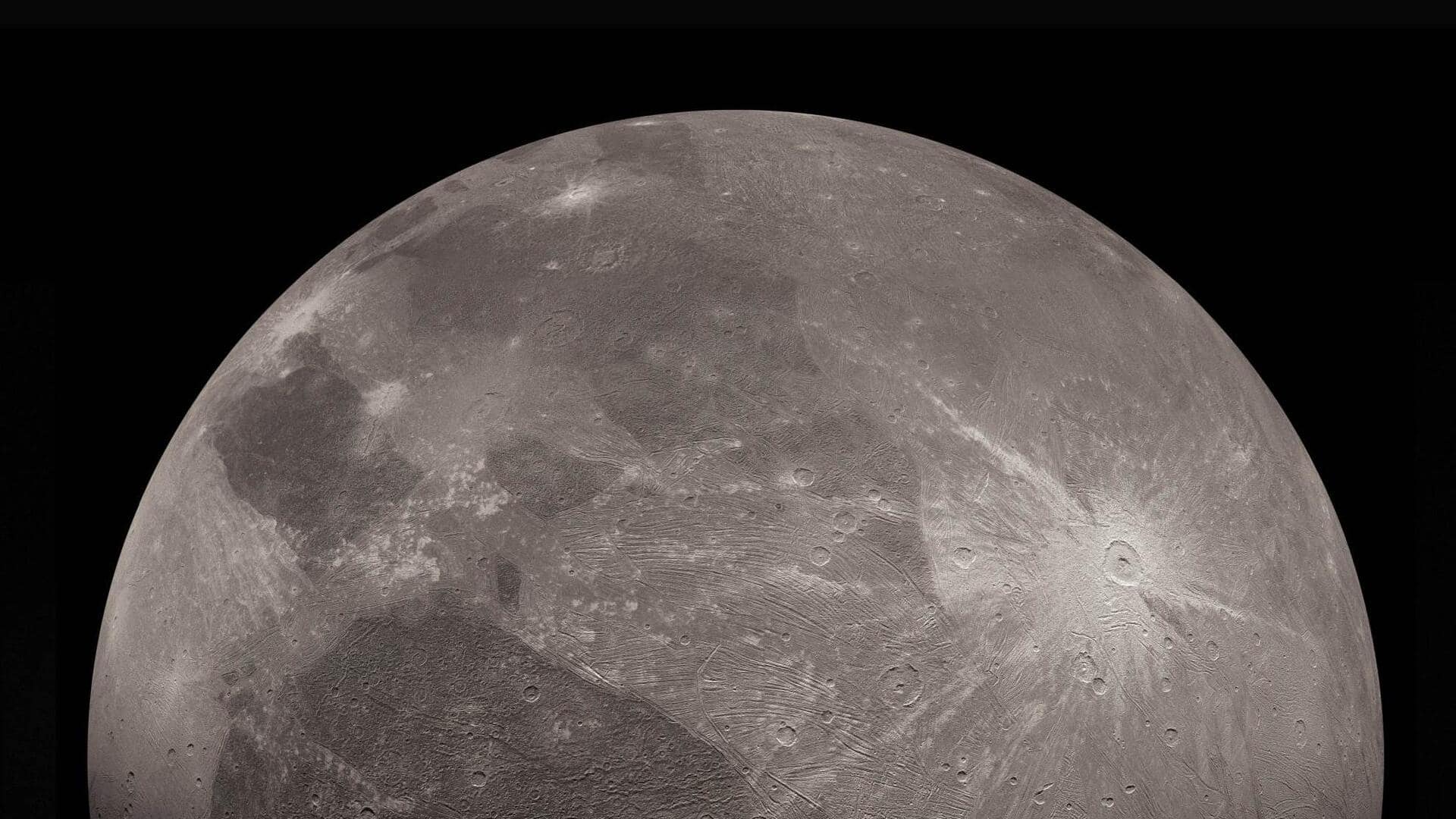
NASA detects life-supporting elements on Ganymede, Jupiter's moon
What's the story
NASA's Juno mission has uncovered the presence of mineral salts and organic compounds on Ganymede, Jupiter's largest moon.
The findings, featured in Nature Astronomy, were obtained using data from Juno's onboard spectrometer as it made a flyby of Ganymede in June 2021.
Ganymede has long been of interest as it's believed to contain a hidden deep ocean beneath an icy exterior.
The latest findings could improve our understanding of Ganymede's origins and the makeup of its hidden subsurface ocean.
Details
Juno's observations provided unprecedented spatial resolution
During the flyby in June, the Juno spacecraft approached within 1,046 kilometers of Ganymede's surface. The onboard spectrometer captured infrared images and spectra of the moon's surface at an "unparalleled spatial resolution for infrared spectroscopy," better than one kilometer per pixel.
This enabled scientists to identify and examine the distinct spectral features of non-water-ice materials, such as hydrated sodium chloride, ammonium chloride, sodium bicarbonate, and possibly aliphatic aldehydes, per NASA.
Explanation
'Carbonate salts could be remnants of carbon dioxide-rich ices'
Former observations by NASA's Galileo, Hubble, and European Southern Observatory's Very Large Telescope have suggested the presence of salts and organics on Ganymede.
However, the spatial resolution of those observations was too low to be sure.
Federico Tosi, Juno's co-investigator from Italy's National Institute for Astrophysics, said, "The presence of ammoniated salts suggests that Ganymede may have accumulated materials cold enough to condense ammonia during its formation."
He added, "The carbonate salts could be remnants of carbon dioxide-rich ices."
Insights
Salts and organics were surprisingly found in protected latitudes
Studies show Ganymede's magnetic field protects its equatorial region from high-energy particle bombardment from Jupiter. Such particles can damage salt and organics.
In 2021, Juno observed this exact Jupiter-facing hemisphere of Ganymede.
"We found the greatest abundance of salts and organics in the dark and bright terrains at latitudes protected by the magnetic field," said Scott Bolton, Juno's principal investigator.
"This suggests we are seeing the remnants of a deep ocean brine that reached the surface of this frozen world."
Facts
Juno's exploration of other Jovian worlds
NASA estimates Jupiter has 80-95 moons. Ganymede is among Jupiter's four largest moons, also called the Galilean moons. The others include Io, Europa, and Callisto.
Juno has also conducted flybys of Europa, which is believed to contain an ocean beneath its icy crust. The spacecraft initially observed Europa in October 2021 and again in September 2022.
The next close flyby is planned for Jupiter's volcanic moon Io on December 30, when Juno will be within 1,500km of the moon's surface.